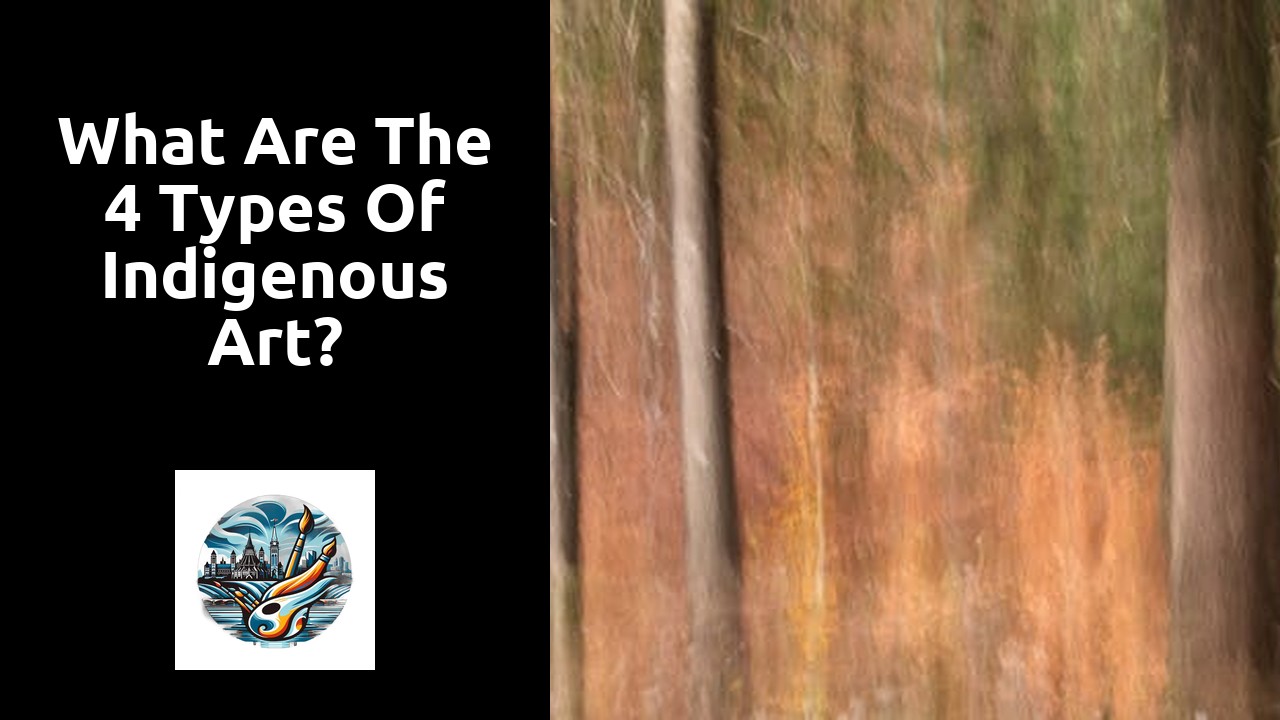What are the 4 types of indigenous art?

Understanding Indigenous Art Forms
Understanding Indigenous art forms is crucial to appreciating the rich cultural heritage and artistic expressions of Indigenous peoples. Traditional Indigenous art encompasses a wide range of forms, including rock paintings, beadwork, quillwork, and totem poles. These art forms often carry deep spiritual meanings and stories that are passed down through generations, reflecting the close connection Indigenous peoples have with the land and their ancestors.
Moreover, the influence of Indigenous culture on art can be seen in contemporary Indigenous art, which combines traditional techniques with modern mediums and styles. Artists draw inspiration from their cultural heritage to create artwork that addresses issues such as colonialism, social justice, and Indigenous identity. By exploring and celebrating Indigenous art forms, we not only honour the traditions and stories of Indigenous peoples but also gain valuable insights into their unique worldviews and experiences.
Traditional Indigenous Art
Traditional Indigenous art encompasses a rich tapestry of artistic expressions deeply rooted in culture and heritage. From intricate beadwork to vibrant paintings, these art forms serve as a powerful medium for storytelling and preserving histories. Each piece of traditional Indigenous art carries layers of symbolism and meaning, reflecting a deep connection to the land, ancestors, and spiritual beliefs.
The art of Indigenous peoples is a testament to their resilience and creativity, passed down through generations as a way of honouring traditions and celebrating identity. Through the use of natural materials and traditional techniques, artists infuse their work with a sense of authenticity and cultural pride. Traditional Indigenous art not only serves as a visual representation of Indigenous worldviews but also as a form of resistance against colonial erasure and cultural assimilation.
Influence of Indigenous Culture on Art
Indigenous culture has deeply influenced various art forms, showcasing a rich history and strong connection to nature. Traditional Indigenous art reflects the symbiotic relationship between artist and environment, often using natural materials and motifs like animals, plants, and symbols representing spiritual beliefs. Visions of the natural world, passed down through generations, are translated into artwork that captures the essence of cultural storytelling and identity.
Contemporary Indigenous art exhibits a dynamic evolution where ancestral customs intersect with modern influences. Artists explore new mediums and techniques while staying true to age-old narratives, creating pieces that challenge stereotypes and celebrate cultural resilience. The fusion of tradition and innovation in Indigenous art not only preserves heritage but also bridges the gap between the past and the present, fostering a sense of pride and continuity within Indigenous communities.
Contemporary Indigenous Art
Contemporary Indigenous art is a vibrant and evolving art form that combines traditional techniques with modern influences. Artists today draw inspiration from their cultural heritage while exploring new mediums and styles to express their unique perspectives. Through their artwork, contemporary Indigenous artists are breaking boundaries and challenging stereotypes, contributing to a rich tapestry of diverse narratives.
Many contemporary Indigenous artists use their art as a platform for social and political commentary, addressing issues such as identity, land rights, and colonial histories. By sharing their stories through visual expressions, these artists highlight the resilience and creativity of Indigenous communities. Through their innovative approaches, contemporary Indigenous artists are reshaping the art world and creating new dialogues that bridge the past with the present.
Importance of Indigenous Art Preservation
Preserving indigenous art is crucial in maintaining cultural heritage and identity. Through art, indigenous communities express their stories, beliefs, and experiences, making it a vital aspect of their culture. By preserving indigenous art forms, we are not only ensuring the survival of traditional practices but also honouring the knowledge and history that these artworks represent.
Indigenous art preservation also plays a significant role in fostering intergenerational connections within communities. As younger generations learn about and engage with traditional art forms, they develop a deeper understanding and appreciation for their cultural roots. This connection to their heritage strengthens community bonds and promotes a sense of pride and belonging among indigenous peoples.
Indigenous Art in Modern Society
Indigenous art holds a significant place in modern society, not just as a reflection of cultural heritage, but also as a form of expression that resonates with audiences worldwide. The rich storytelling, symbolism, and connection to the land found in Indigenous art continue to captivate and inspire contemporary artists. Through mediums such as painting, sculpture, and digital art, Indigenous artists are able to share their stories and perspectives, bridging the gap between tradition and innovation.
Moreover, the growing recognition and appreciation of Indigenous art in modern society have led to increased opportunities for artists to showcase their work on a global stage. Art galleries, museums, and cultural institutions are increasingly featuring exhibitions that celebrate Indigenous art and culture, raising awareness and promoting cross-cultural understanding. This exposure not only helps to preserve and honour Indigenous traditions but also fosters a sense of pride and empowerment within Indigenous communities, ensuring that their voices and stories continue to be heard and valued.
FAQS
What is traditional indigenous art?
Traditional indigenous art refers to art forms that have been passed down through generations within indigenous communities. This type of art often includes storytelling, ceremonial objects, and cultural symbols.
What is contemporary indigenous art?
Contemporary indigenous art encompasses modern artistic expressions by indigenous artists that may incorporate traditional techniques and materials while also addressing current issues and themes relevant to indigenous communities.
How does indigenous culture influence art?
Indigenous culture influences art by providing a rich source of inspiration, incorporating traditional techniques and materials, and reflecting the values, beliefs, and histories of indigenous communities.
Why is it important to preserve indigenous art?
It is important to preserve indigenous art as it serves as a vital link to cultural heritage, helps to maintain cultural identity, and provides a platform for indigenous voices and perspectives to be heard and celebrated.
Related Links
What is Aboriginal art for kids?What are the 4 types of Indigenous art?